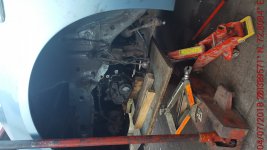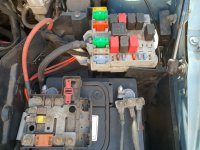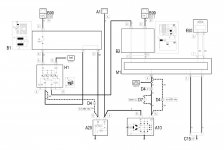Hmm.... if the clutch and gearbox went on okay and you connected the gear linkages to the gearbox, then it all sounds normal.
You can't really connect the gear linkages badly or incorrectly.. they tend to fit one way and work or not. You can change gear (and see a difference) so they sound fine.
Gearbox we'll assume is fine, since it's changing gear and not making any noises.
So.. in the dock is the clutch. The symptoms are that the clutch is still partially engaged rather than it's not working. I presume the clutch you got looked exactly the same as the one you removed (just newer) and that you fitted the driven plate the right way round (there would have been something written on it such as "Lato Motore" ... which means "Engine side".
If that's all good, then the actuation system might be in the frame. If the release bearing and the rod (inside the housing) are mated together okay, what about the lever (the one that is connected to the slave) that actuates the rod?
It looks like it's fitted to the rod on splines, and secured with a circlip. Is it possible that someone moved/rotated the lever round on the rod (e.g. to make it fit with an under/oversized slave)? You might be able to see some scrape marks on the circlip ears etc.
If it's all dirty and rusted together that it obviously hasn't been touched for 15 years, then this idea might be a red herring. Hopefully you have the same part on the old gearbox for comparison (you haven't chucked the old box away yet, have you?)

If you bought a new slave and it all fits with the rod perfectly then that would also cancel out this idea.
If it all looks okay, then before you unmantle anything, it might be easier to assemble it enough to put the wheels on the ground to see how it works. I can't be 100% sure .. but I vaguely remember that I could change gear without the clutch on my old beast (and on the Younger Mrs S's Cinquecento). It could be that with the car in the air and no load anywhere the pieces just move around and don't need the clutch. I would jack mine up and give it a try but my workshop is my old mum's garage and I won't be back there for a few weeks.
Ralf S.






